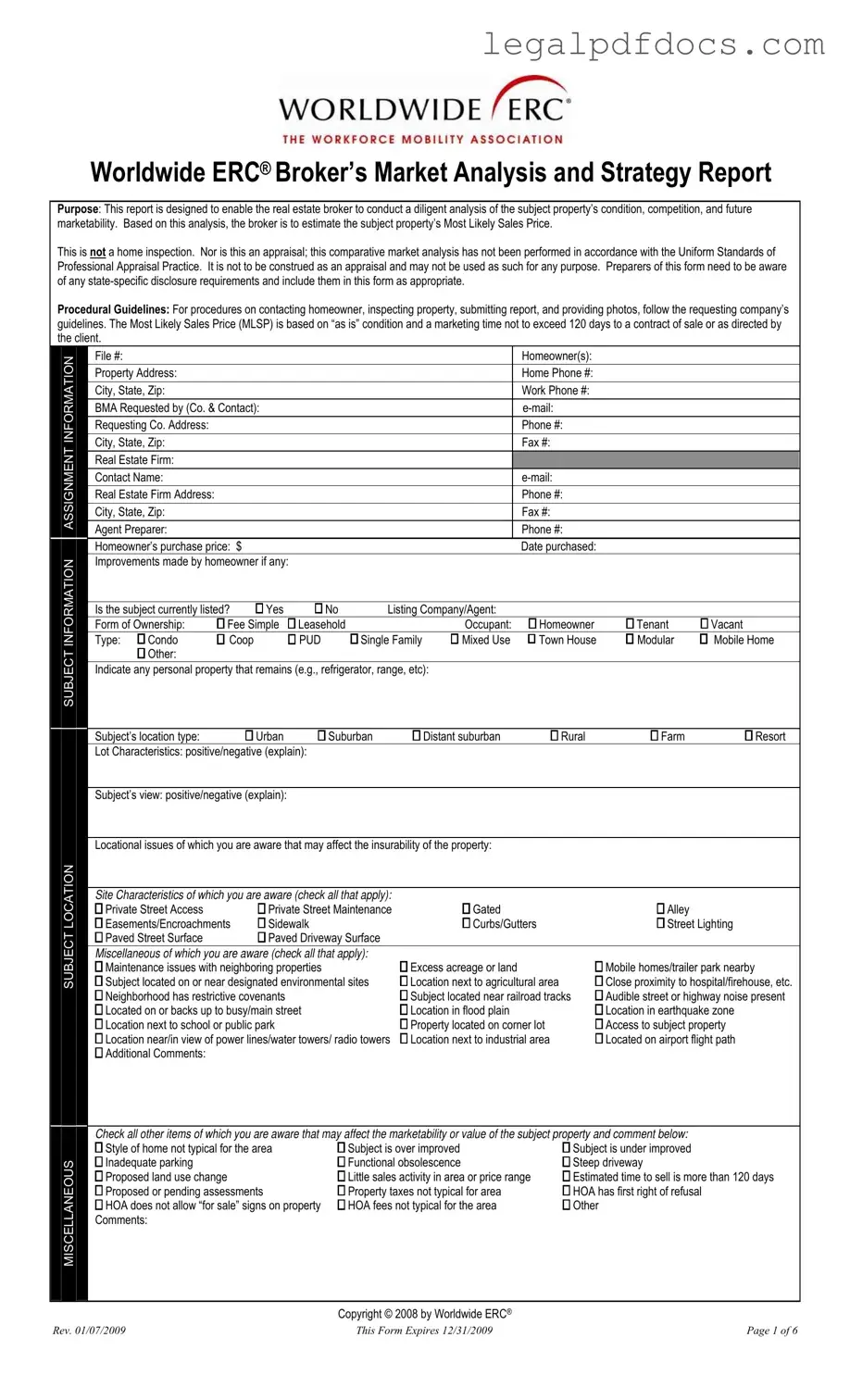Fill Out a Valid Erc Broker Market Analysis Template
The Worldwide ERC® Broker’s Market Analysis and Strategy Report is a valuable tool for real estate brokers. This report helps brokers assess a property's condition, competition, and potential marketability, ultimately leading to an estimation of the property's Most Likely Sales Price. It is essential to note that this analysis is not a home inspection or an appraisal, and it should not be used as such.
To ensure a thorough evaluation, brokers must adhere to state-specific disclosure requirements and follow the procedural guidelines provided by the requesting company. For those looking to complete this form, please click the button below to get started.
Open Erc Broker Market Analysis Editor Here
